
The Mass in B minor, BWV 232, is an extended setting of the Mass ordinary by Johann Sebastian Bach. The composition was completed in 1749, the year before the composer's death, and was to a large extent based on earlier work, such as a Sanctus Bach had composed in 1724. Sections that were specifically composed to complete the Mass in the late 1740s include the "Et incarnatus est" part of the Credo.
This is a list of notable events in music that took place in the year 1733.
Christian Petzold was a German composer and organist. He was active primarily in Dresden, and achieved a high reputation during his lifetime, but his surviving works are few. It was established in the 1970s that the famous Minuet in G major, previously attributed to Johann Sebastian Bach, was in fact the work of Petzold. The sprightly melody was used in the 1965 pop music hit "A Lover's Concerto" by the American group The Toys.

Dresden Cathedral, or the Cathedral of the Holy Trinity, Dresden, previously the Catholic Church of the Royal Court of Saxony, called in German Katholische Hofkirche and since 1980 also known as Kathedrale Sanctissimae Trinitatis, is the Catholic Cathedral of Dresden.

Gottfried Silbermann was a German builder of keyboard instruments. He built harpsichords, clavichords, organs, and fortepianos; his modern reputation rests mainly on the latter two.

Tönet, ihr Pauken! Erschallet, Trompeten!, BWV 214, is a secular cantata by Johann Sebastian Bach, composed in 1733 for the birthday of Maria Josepha, Queen of Poland and Electress of Saxony. Classified in published editions as a dramma per musica, it is based on a libretto by an unknown author. The piece has the dedicatee addressed by allegorical figures representing Roman and Greek goddesses of war and peace. It is structured as nine movements, and scored for four vocal parts and a festive Baroque orchestra with trumpets, timpani, flutes, oboes and strings. Choral movements frame a series of alternating recitatives and arias. Bach led the first performance with the Collegium Musicum at the Zimmermannsches Caffeehaus on 8 December 1733.

Johann Sebastian Bach was a German composer and musician of the late Baroque period. He is known for his prolific output across a variety of instruments and forms, including orchestral music such as the Brandenburg Concertos; solo instrumental works such as the cello suites and sonatas and partitas for solo violin; keyboard works such as the Goldberg Variations and The Well-Tempered Clavier; organ works such as the Schubler Chorales and the Toccata and Fugue in D minor; and choral works such as the St Matthew Passion and the Mass in B minor. Since the 19th century Bach Revival, he has been generally regarded as one of the greatest composers in the history of Western music.
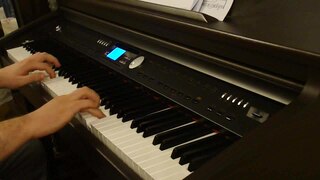
The Minuets in G major and G minor, BWV Anh. 114 and 115, are a pair of movements from a suite for harpsichord by Christian Petzold, which, through their appearance in the 1725 Notebook for Anna Magdalena Bach, used to be attributed to Johann Sebastian Bach. These minuets, which are suitable for beginners on the piano, are among the best known pieces of music literature. The 1965 pop song "A Lover's Concerto", of which millions of copies were sold, is based on the first of these Minuets.
Most of Johann Sebastian Bach's extant church music in Latin—settings of the Mass ordinary and of the Magnificat canticle—dates from his Leipzig period (1723–50). Bach started to assimilate and expand compositions on a Latin text by other composers before his tenure as Thomaskantor in Leipzig, and he continued to do so after he had taken up that post. The text of some of these examples by other composers was a mixture of German and Latin: also Bach contributed a few works employing both languages in the same composition, for example his early Kyrie "Christe, du Lamm Gottes".
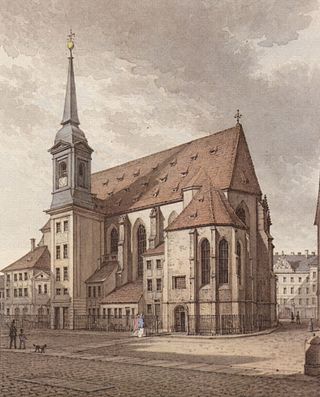
The Busmannkapelle was a side chapel of the Sophienkirche in Dresden. The chapel was built in 1400 when the Sophienkirche was still part of the city's Franciscan monastery. It was funded by the patrician Busmann family, who used it as a family and funerary chapel and after whom it was named. It was destroyed in February 1945 during the bombing of Dresden in World War II, but in 1994 plans were instigated to reconstruct the chapel on the same site as the Busmannkapelle Memorial, as a memorial to the church as a whole.

Bach's Missa of 1733, BWV 232 I, is a Kyrie–Gloria Mass in B minor, composed in 1733 by Johann Sebastian Bach. It is an extended missa brevis consisting of a Kyrie in three movements and a Gloria in nine movements. Bach started to compose it, partly based on earlier work, after the death of his sovereign Augustus the Strong, dedicating it to the latter's son and successor, Frederick August II, in a letter dated 27 July 1733. At the time, Bach was in his tenth year as Lutheran church musician in Leipzig, while the Catholic court of the sovereign Elector of Saxony was located in Dresden. Bach sent performance parts of his Missa to Dresden while he kept the autograph score in Leipzig. Upon arrival in Dresden, the Mass was not added to the repertoire of the Catholic court chapel, but instead the parts, and Bach's dedication letter, were archived in the sovereign's library.

Apart from the 1733 Mass for the Dresden court, Johann Sebastian Bach wrote four further Kyrie–Gloria Masses, BWV 233–236. These compositions, consisting of the first two sections of the Mass ordinary, have been indicated as Missae breves or Lutheran Masses.
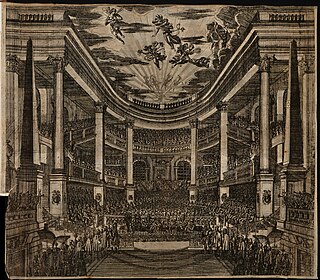
The Opernhaus am Taschenberg was a theatre in Dresden, Saxony, Germany, built from 1664 to 1667 by Wolf Caspar von Klengel. It was the first opera house of the capital of Saxony, Residenz of the Elector of Saxony. Seating up to 2000 people, it was at the time one of the largest opera houses in Europe. It was also called Klengelsches Opernhaus and Komödienhaus am Taschenberg.

St. Matthew was a church in the old town of Leipzig. During its history it had several names and functions. As a church of the Franciscan order, built in 1488, it was known as Barfüßerkirche and Heiliggeistkirche. It served as a Lutheran church, known as Neukirche, from 1699. A new congregation formed in 1876 and named the church Matthäikirche. The building was destroyed in a bombing in 1943.

Prelude and Fugue in E minor, BWV 548 is a piece of organ music written by Johann Sebastian Bach sometime between 1727 and 1736, during his time in Leipzig. The work is sometimes called "The Wedge" due to the chromatic outward motion of the fugue theme. Unlike most other organ preludes and fugues of Bach, the autograph fair copy of the score survives, though the handwriting changes twenty two measures into the fugue to the hand of Johann Peter Kellner, a likely pupil and acquaintance of Bach who played an important role in the copying of his manuscripts. Because of the work's immense scope, it has been referred to as "a two-movement symphony" for the organ.
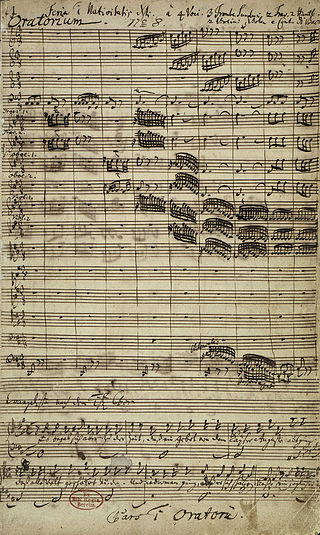
Jauchzet, frohlocket! Auf, preiset die Tage, BWV 248I, is a 1734 Christmas cantata by Johann Sebastian Bach that serves as the first part of his Christmas Oratorio. Bach was then Thomaskantor, responsible for church music at four churches in Leipzig, a position he had assumed in 1723. For the oratorio, the libretto by an unknown author followed the nativity of Jesus from the Gospel of Luke, interspersed with reflecting texts for recitatives and arias, and stanzas from Lutheran hymns.

Und es waren Hirten in derselben Gegend, BWV 248II, is a 1734 Christmas cantata by Johann Sebastian Bach as the second part of his Christmas Oratorio. Bach was then Thomaskantor, responsible for music at four churches in Leipzig, a position he had assumed in 1723.
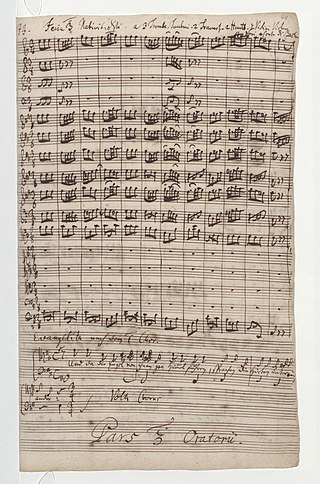
Herrscher des Himmels, erhöre das Lallen, BWV 248III, is a 1734 church cantata for the third day of Christmas (27 December) which Johann Sebastian Bach composed as the third part of his Christmas Oratorio. The Christmas cantata was first performed in 1734, in Leipzig. Bach was then Thomaskantor, responsible for music at four churches in Leipzig, a position he had assumed in 1723.

Missa Providentiae is a Kyrie–Gloria Mass in D minor composed by Antonio Caldara, which around 1728 was expanded into a Missa tota by Jan Dismas Zelenka: this composer derived a Sanctus and Agnus Dei from Caldara's Kyrie and Gloria, and added a Credo, ZWV 31, of his own hand. Around 1738–1741, Johann Sebastian Bach made a copy of a Sanctus, BWV 239, which was based on the first section of the Gloria of Caldara's Kyrie–Gloria Mass.

The Nosseni Altar is a Renaissance altar crafted by Swiss sculptor Giovanni Maria Nosseni (1544–1620) in the year 1606. This artwork is Nosseni's most significant creation. Originally serving as the main altar of Dresden's Sophienkirche, the altar suffered extensive damage during the bombing of the city in February 1945. Following its restoration efforts in the 1990s, the Nosseni Altar has been housed in the Loschwitz church since 2002.






















